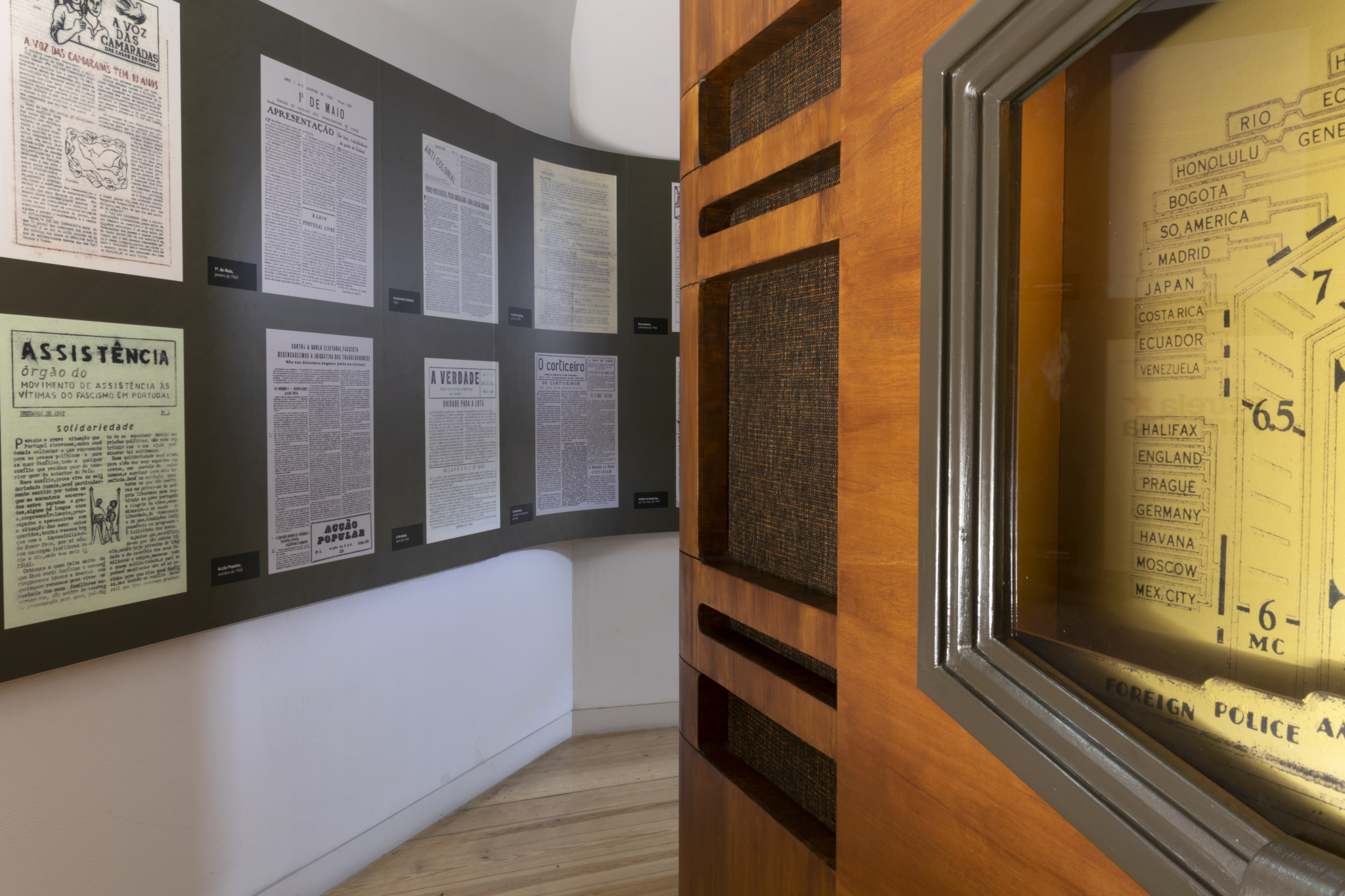Long-term Exhibition


Rise and Fall of Fascism
Portugal 1890-1976
"Unquestionable Certainties"
Clandestine Press
Clandestinity Police and Political Courts
Floor 1 addresses the rise and fall of fascism and provides a brief history of Portugal between 1890 and 1976, also exposing examples of censorship on the media and the book and record production during the dictatorship (1926-1974 ). This is followed by a reference to the "unquestionable certainties" of Salazar's regime ("God, Homeland and Family") and, in contrast, the importance of the clandestine press as the only vehicle of information that focused on what was really happening in the country and in the world, embracing the free expression of ideas and convictions. Clandestinity is also evoked as a form of resistance when all those who would not submit to the dictatorship were seen and treated as suspects. Likewise, the sprawling nature of the political police in Portugal and the role of the political courts, mere executors of the orders of the police and those responsible for it, are illustrated.
Resist
Prison Circuit
Identification
Interrogation and Torture
Prisons and Concentration Camps
Resisting in Jail
Isolation in the "Curros" (Bullpens)
On Floor 2, the various and diversified modes of organisation of the anti-fascist resistance are shown. From the individual to the collective plane, in different social, political and ideological contexts, thousands of men and women devoted their lives to fighting the regime then in place in Portugal. In short, it focuses on the combined operation of the police and judicial power of the dictatorship, revealing its different stages from the moment someone was detained onwards. The processes of identification of the prisoners, the nature of the interrogations, usually violent, and based on great psychological pressure and systematic use of torture, are other topics which are also addressed. In addition, the complex web of prisons and concentration camps installed in the different colonies, where prisoners were, often, arbitrarily deported to, is also shown. Resistance has always been expressed in different ways by the incarcerated men and women, notably through their clandestine organisation and the preparation of individual or collective escapes. Finally, the extended isolation in disciplinary cells or, as was the case in the Prison of Aljube, in very small cells (the curros or gavetas [drawers]), which was one of the torture practices most used by the political police to destroy the prisoners' capacity to resist, are remembered on this floor.
Colonialism anti-colonial struggle
Freedom April 25th, 1974
Memory and Citizenship
Documentation Centre
Administrative area
On floor 3, the visitor can learn about remarkable aspects of colonialism, the liberation struggles of the colonial peoples, the colonial war, and, furthermore, the solidarity of many Portuguese towards this struggle. On this floor, many of the opponents who stayed behind, victims of the repressive system of the dictatorship, are evoked as well. The conquest of freedom and democracy on April 25th, 1974 was, without a doubt, as Sophia de Mello Breyner Andresen wrote, the first day whole and pure. The permanent exhibition ends with the commitment of the Museum of Aljube to the preservation and dissemination of Historical Memory as acts of Culture and Citizenship.
Auditorium
Cafeteria
The Museum of Aljube Resistance and Freedom has an Auditorium on the top floor of the building, designed to promote initiatives in the context of its mission. On the same floor, a Cafeteria was installed for the service of the visitors, with a panoramic view of the city and the Tagus River.